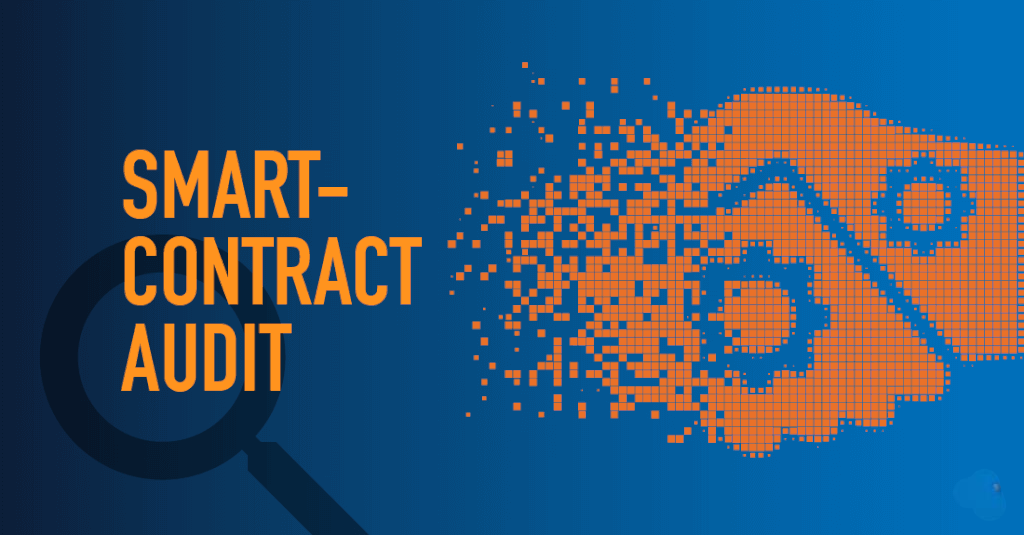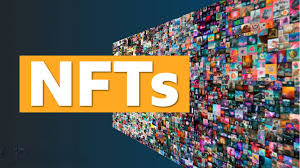What Are the Essential Security Practices in Token Development?

Strong 8k brings an ultra-HD IPTV experience to your living room and your pocket.
The rapid growth of blockchain and cryptocurrency has propelled token development into the spotlight as a key driver of decentralized ecosystems. However, the decentralized and immutable nature of blockchain technology means that any security vulnerabilities in tokens can lead to significant financial loss, reputation damage, and legal repercussions. With numerous high-profile hacks and exploits in the crypto space, ensuring robust security in token development has never been more critical. This blog delves into the essential security practices developers must adopt to safeguard token integrity, protect users, and build trustworthy blockchain projects in 2025.
1. Secure Smart Contract Coding Practices
Secure coding is the foundation of token security. Developers must adhere to strict guidelines and best practices to minimize vulnerabilities from the start.Smart contracts define the rules and behaviors of tokens, so their code must be flawless. Using well-audited, standard libraries like OpenZeppelin’s contracts for ERC-20 or ERC-721 tokens reduces the risk of common pitfalls. Developers should avoid reinventing the wheel for standard functions such as token transfer, minting, or burning.Code should be written with clear logic and simplicity, avoiding unnecessary complexity that can obscure bugs. Immutable contracts require careful planning since post-deployment fixes are limited or impossible. To mitigate this, proxy contract patterns can enable upgradeability, allowing patches and improvements while retaining the original contract state.
Implementing access control is crucial. Functions that modify token supply or critical parameters must have strict authorization checks, often through onlyOwner or role-based access control modifiers. This prevents unauthorized users from exploiting privileged functions. Arithmetic operations require attention to overflow and underflow issues. Even though Solidity 0.8+ has built-in overflow checks, developers should be aware of these risks when working with earlier compiler versions or custom math libraries. Finally, comprehensive unit testing and static code analysis help catch logical errors and security flaws early. Tools like Slither, MythX, and Securify analyze contract bytecode and source code for known vulnerability patterns.Adopting secure coding practices not only protects tokens from attacks but also instills confidence in users and investors.
2. Thorough Security Auditing and Testing
Security auditing is an indispensable practice in token development. It involves comprehensive examination by experts and automated tools to uncover vulnerabilities before deployment. A professional audit typically includes manual review by experienced security researchers who examine the contract architecture, logic, and dependencies. They test for common attacks such as reentrancy, integer overflow, front-running, denial of service, and unauthorized access. Automated scanners complement manual audits by rapidly analyzing code against a database of known issues. Tools like Mythril and Oyente identify potential runtime errors or security breaches. However, relying solely on automated tools is insufficient as they may miss complex logic flaws.
Penetration testing simulates attacks against deployed contracts in controlled environments, helping reveal weaknesses exploitable by malicious actors. This process highlights real-world risks beyond static analysis.In addition to single audits, continuous auditing and bug bounty programs foster ongoing security vigilance. Bug bounties incentivize ethical hackers to responsibly disclose vulnerabilities, enabling developers to fix issues before public exploitation.Security audits should not be a one-time event. As the token ecosystem evolves and new features are added, regular re-auditing ensures emerging threats are addressed.In essence, thorough auditing and testing act as the gatekeepers of token security, preventing costly mistakes and preserving the integrity of the blockchain ecosystem.
3. Implementing Robust Access Control Mechanisms
Access control defines who can perform sensitive operations within a token’s smart contract and is vital for preventing unauthorized manipulation. Tokens often include privileged functions such as minting new tokens, pausing transfers, or updating contract parameters. If these are left open or improperly restricted, attackers can exploit them to mint unlimited tokens, freeze user assets, or take control. The simplest access control pattern is the onlyOwner modifier, which restricts critical functions to the contract deployer or a designated owner. However, this single point of control can become a security risk if the owner’s private keys are compromised.
To enhance security, developers should adopt role-based access control (RBAC) models. Frameworks like OpenZeppelin’s AccessControl allow assigning multiple roles with granular permissions, distributing control among trusted parties and reducing risk. Multi-signature wallets are another layer of protection, requiring multiple approvals before executing sensitive functions. This reduces the likelihood of rogue transactions by a single compromised key. For decentralized governance, token holders can vote on important changes, using decentralized autonomous organizations (DAOs) to manage upgrades and policy changes transparently and democratically. All access control mechanisms should be clearly defined, tested, and documented to ensure proper enforcement and prevent privilege escalation attacks. By implementing strong access controls, token developers can safeguard assets, enforce rules, and build user trust in the project’s security.
4. Protecting Against Common Token Vulnerabilities
Tokens face a range of security threats that developers must proactively defend against to ensure resilience.One prevalent risk is reentrancy attacks, where malicious contracts exploit external calls to repeatedly call a vulnerable function, draining funds. This can be prevented by following the checks-effects-interactions pattern and using Solidity’s ReentrancyGuard. Integer overflows and underflows remain critical despite Solidity’s newer versions having built-in protections. Developers should double-check arithmetic operations and use safe math libraries if required. Front-running attacks occur when miners or bots reorder or insert transactions to gain an unfair advantage. Implementing commit-reveal schemes or time-lock mechanisms can reduce this risk. Tokens should avoid relying on block timestamps for critical logic since miners can manipulate timestamps slightly to influence contract outcomes.
Denial of service (DoS) attacks can target contract functions by forcing them to consume excessive gas or enter failing states. Developers should avoid unbounded loops and carefully design fallback functions.Unchecked external calls may cause failures or unexpected behavior. Developers must always verify external call results and handle failures gracefully. Securing oracles and data feeds is essential since many tokens rely on external data. Using decentralized oracle networks with multiple data sources mitigates manipulation risks. Thorough knowledge and mitigation of these common vulnerabilities significantly harden tokens against attack vectors prevalent in the blockchain ecosystem.
5. Ensuring Transparency and Auditability
Transparency in token development fosters trust among users, investors, and regulators. Ensuring auditability means making contract logic and operations clear, verifiable, and traceable. Open-sourcing token smart contracts on platforms like GitHub allows community members and auditors to inspect the code, identify flaws, and contribute improvements. This collective scrutiny often uncovers vulnerabilities early. Publishing detailed audit reports and security assessments demonstrates commitment to best practices and helps users make informed decisions.
Tokens should emit comprehensive events during key operations such as transfers, approvals, minting, or burning. Events provide an immutable on-chain record for monitoring and forensic analysis.Implementing upgradeable contracts with transparent governance mechanisms ensures users are aware of changes and can hold developers accountable. Additionally, tools like Etherscan and blockchain explorers enable anyone to view token transactions and contract interactions, further reinforcing transparency. By emphasizing transparency and auditability, token projects build stronger reputations, facilitate regulatory compliance, and enhance overall ecosystem security.
6. Post-Deployment Security Monitoring and Incident Response
Security does not end after deployment. Continuous monitoring and swift incident response are vital to maintaining token integrity and user confidence. Developers should set up automated monitoring systems to track unusual token activity, such as sudden spikes in transfers, abnormal minting, or unauthorized access attempts. Alerts enable quick reactions to potential threats. Bug bounty programs motivate white-hat hackers to discover vulnerabilities, providing an ongoing security layer beyond internal audits.
Having a clear incident response plan prepares the team to address security breaches effectively. This includes communication protocols, patch deployment strategies, and user notifications. Tokens employing upgradeable architectures must carefully manage upgrades to avoid introducing new vulnerabilities. Using multisig approval and decentralized governance enhances upgrade security. Community engagement plays a role in post-deployment security, encouraging users to report issues and participate in governance decisions. In the dynamic crypto environment, proactive monitoring and rapid response mitigate damage and sustain trust, which are crucial for long-term project success.
Conclusion
Security in token development is a multifaceted challenge requiring diligence, expertise, and ongoing effort. From secure coding and comprehensive auditing to access control, vulnerability mitigation, transparency, and vigilant post-deployment monitoring, every aspect plays a pivotal role in safeguarding tokens. As blockchain technology evolves, adopting and updating these essential security practices will remain indispensable for developers aiming to build resilient, trustworthy, and successful token projects in 2025 and beyond.
Note: IndiBlogHub features both user-submitted and editorial content. We do not verify third-party contributions. Read our Disclaimer and Privacy Policyfor details.







